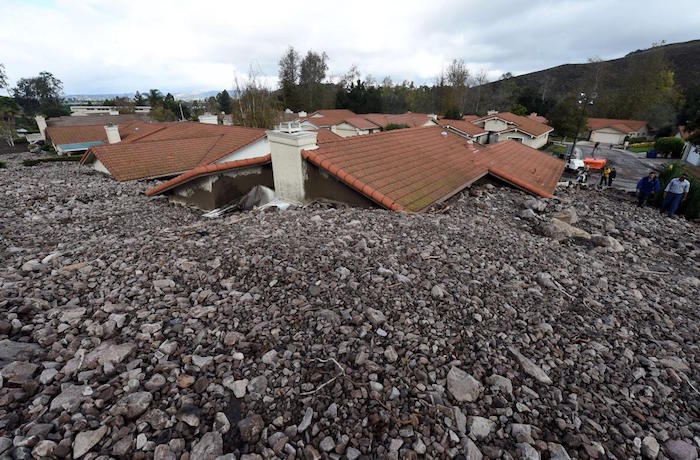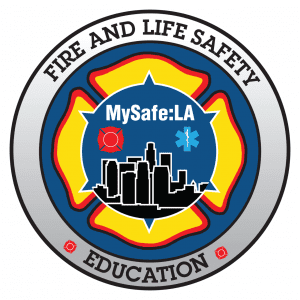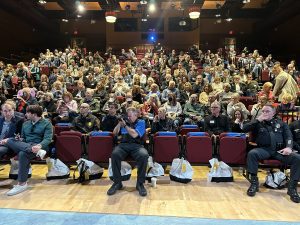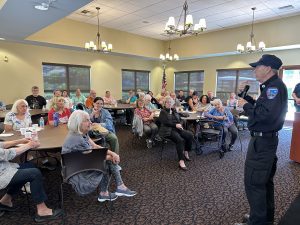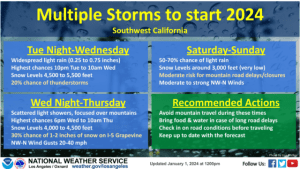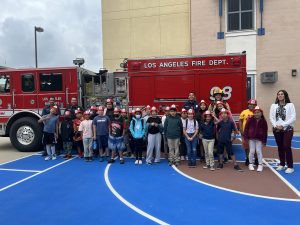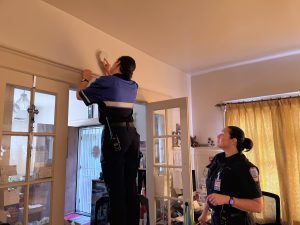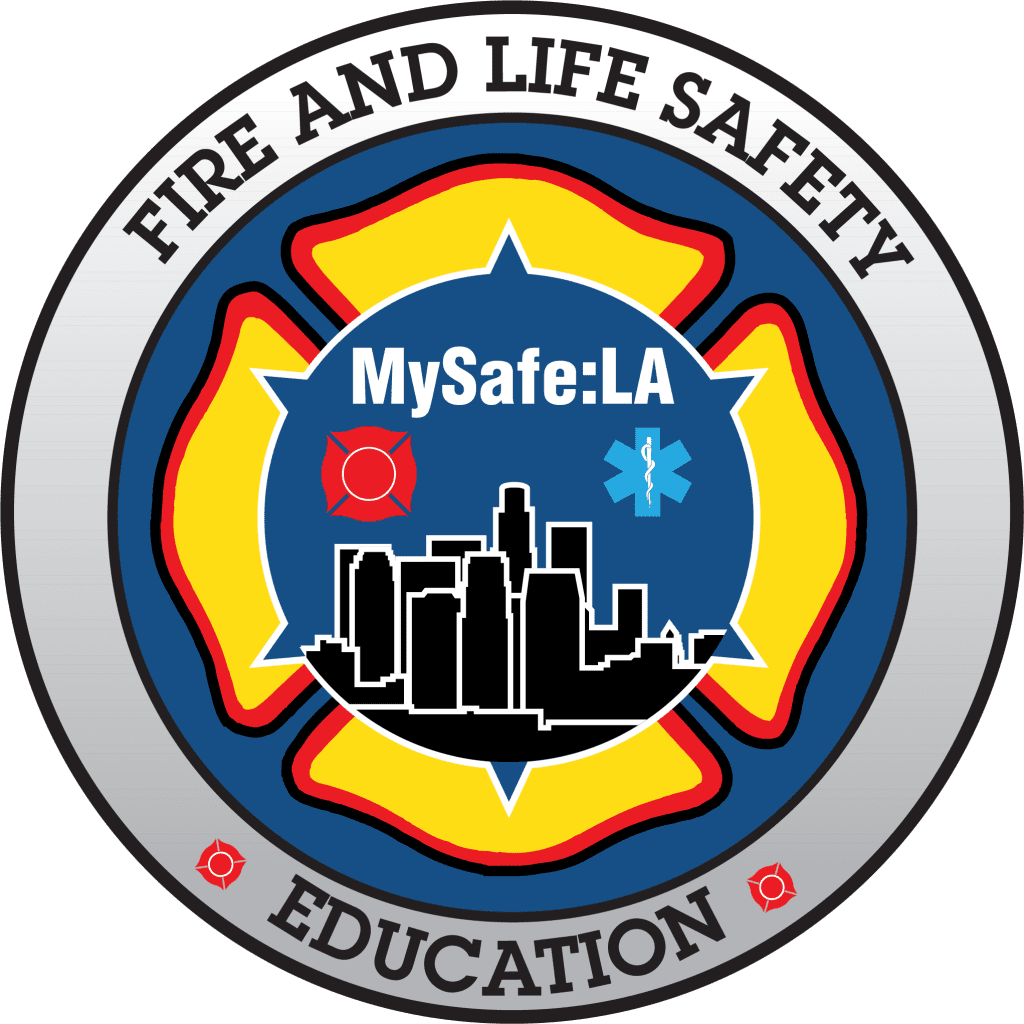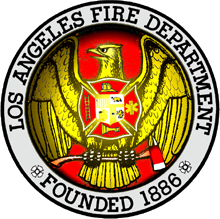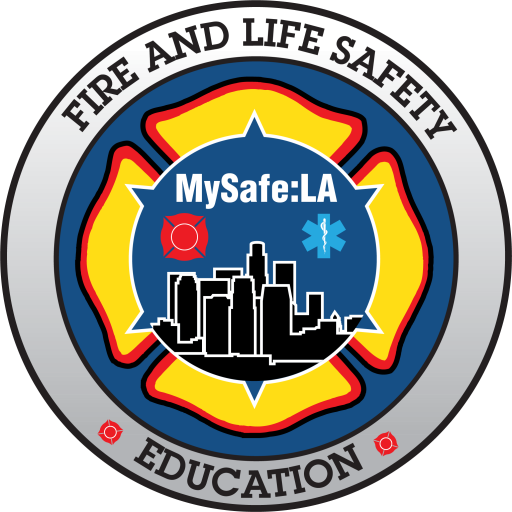Every day in Los Angeles, people are asking, “What about El Niño?” The wet weather phenomenon has become a huge blip on the forecasting radar for the Western United States since summer. But what does it really mean for Californians in general, and Angelenos specifically?
What is El Nino?
The term El Niño in Spanish means The Little Boy, or Christ Child. El Niño was first observed by fishermen off the coast of South America in the 1600s, with the appearance of unusually warm water in the Pacific Ocean. The name was chosen based on the winter (near Christ’s birth) time of year when it typically occurred.
Scientifically, El Niño is a component of a larger weather pattern known as the El Niño-Southern Oscillation (ENSO) cycle. The ENSO cycle is a scientific term that describes the fluctuations in temperature between the ocean and atmosphere in the east-central Equatorial Pacific (or, the middle of the huge Pacific Ocean.
The opposite weather phase of El Niño is called La Niña. La Niña means The Little Girl in Spanish. La Niña is also sometimes called El Viejo, anti-El Niño, or simply “a cold event.” During a La Niña year, winter temperatures are warmer than normal in the Southeast and cooler than normal in the Northwest.
Why is El Niño Dangerous?
Simply put, El Niño is dangerous because it behaves differently than the “typical” weather pattern that occur in the Western U.S. and other parts of the world. People who don’t pay attention and prepare for the effects of El Niño are most at risk. Those who take valuable steps to protect their families and property are less likely to suffer the impact of extensive rain, wind, and cold that is likely to affect the west for months to come. The 1997-98 El Niño claimed 17 lives and caused more than $500 million dollars in damage throughout California.


The 2015/2016 El Niño is bringing lots of water to Southern California. You might think that was good news, as the state has been suffering through a significant drought for years. Unfortunately, the arid weather and lack of water during the past few years, not to mention the signficant wildfire summer that California has experienced adds up to real danger for people and property. This “Godzilla” El Niño will roar into the State, and the bone dry earth will not be able to absorb the heavy rainfall. The result will almost certainly be floods and mudslides. Lots of them.
When Will El Niño Arrive?
It’s already here. In mid-October, the first El Niño related storm swept across California. It wasn’t a big storm, but after a summer of wildfires and unusual heat, the impact was significant. In California, mud flows trapped people on major highways. Several people were carried away to their death. In Indonesia, forest fires raged. Rain and wind in Britain were blamed on the “The Little Boy,” and a disappointing monsoon in India is also credited to the weather patterns developing in the central Pacific Ocean.


Still, the major affects of El Niño have yet to be felt in Southern California. Scientists can measure the degree of discomfort felt as a result of the combined effects of temperature and humidity. When they observe the heat index over the surface of a vast tract of ocean in the equatorial Pacific, they’re seeing something very ominous: It may be that El Niño is as big as anything seen before, and computer models are forecasting that it will only get stronger over the coming weeks and months. We can expect additional storms to form, in fact as early as this coming week, and by the middle of January, the full force of El Niño will likely be upon us.
Is Destructive Weather Guaranteed?
Some scientists are very worried. Bill Patzert, a climatologist with NASA’s Jet Propulsion Laboratory, gave this El Niño its “Godzilla” moniker. The National Oceanic and Atmospheric Administration (NOAA) has stated that the current El Niño episode could rival the strongest El Niños on record (1982-83, 1997-98). NOAA is the premier source of weather data and official forecasting for the U.S. NOAA believes the chances of a dangerous El Niño are at least 95%.
The “Godzilla” El Niño of 2015-2016 is expected to be one of the strongest on record, having large consequences on global weather. But not all of El Niño’s impacts are monstrous, and some can even be positive. We’ll address the good possibilities about El Niño in a future story.
What is Being Done About the Godzilla El Nino?
The City of Los Angeles (and other communities) are not sitting still and just waiting for the rains to begin. Mayor Garcetti has developed an El Niño Task Force, comprised of 13 departments, for a for a collective, focused effort to protect Angelenos.
“The city must be ready for the immediate effects and the subsequent aftermath that come with heavy rainfall,” Garcetti told reporters and stakeholders at a press event held at the City’s Emergency Management Department (EMD). “The actions we take to prepare for any and all of these impacts have the potential to directly affect our livelihoods and indeed ensure the survival of our city.” EMD General Manager Jim Featherstone echoed the Mayor, adding, “If you’re prepared for the big earthquake, you have the fundamentals to be prepared for El Niño.”
In addition to the El Niño Task Force coordinating efforts, private agencies are engaging in activities designed to better prepare people for the coming storms, and to help them survive and emerge on the other side. Cellphone providers AT&T, Sprint, T-Mobile and Verizon say they will share network capabilities in the event of a not only an El Niño disaster, but an earthquake event as well.
What Resources are Available to Me?
The Los Angeles Fire Department and the Bureau of Street Services have ordered hundreds of thousands of sandbags, and several hundred thousand pounds of sand. Residents may collect these bags and/or sand at fire stations, but we suggest you dial 311 during business hours to get the latest information on El Niño and where to pick up either sand or sandbags.
The Emergency Management Department will hold town hall meetings around the city for people interested in learning how to protect their property and families. The City is planning on new practices for emergency shelter, food, and emergency resources as well.
MySafe:LA will be teaching students and older adults about El Niño, providing information to take home to their parents, and add a new El Niño section on the highly trafficked MySafe:LA website. Additional resources and information will be made public during the coming weeks and months, so everyone in L.A. has the best possible opportunity to survive the coming Godzilla weather system.
A Few Basic Tips
If it’s raining and/or you’re told that significant weather is imminent, stay home. Business owners should talk with employees about “work from home” options in the event of bad weather.
If you drive, don’t drive through standing water. Even if it doesn’t seem deep, you don’t know what’s under that water. A broken storm drain, missing manhole cover, or other debris could damage your vehicle and strand you, making you a sitting duck for the Godzilla monster to sweep you away (and did you know it only takes a bit more than one foot of water to move your vehicle?) Finally, if you do become stranded for any reason, stay with your vehicle. The Los Angeles Fire Department, LAPD, and other first responder agencies will rescue you.
Stay away from canyons, creeks, flood control channels and the Los Angeles River. They will quickly fill with water. If you fall in, rescue may be a challenge, and water sweeps through those channels at a fairly high rate of speed. It’s also illegal to be inside most flood control channels in Los Angeles.
If You See Something, Say Something
For non-emergency issues, you can call the appropriate agency. Angelenos may call 3-1-1 or (213) 473-3231 to report any issue that may relate to El Niño. There is also an online form, plus the very cool MyLA311 app where you can report things like downed trees, broken street lights, traffic signals and so on.
If you see downed power lines where people may come into contact with them, fire, people in distress, or moving water or mud, don’t hesitate to call 9-1-1. The call takers will speak with you and determine if there is a real emergency.
If you call 9-1-1, be prepared to tell the call taker where you are. That means your address, the street nearby, and the closest intersection or landmark. Most of us know our own address, but do we know the address of the local supermarket? If you’re shopping and the parking is being innundated by mud, how will you know what to tell the 9-1-1 call taker? Practice with your family if you need to, but learn about “situational awareness,” and practice it every day during the upcoming El Niño season.
It’s Real – Be Prepared and Survive
Godzilla is already here, but the wrath of El Niño is hopefully a few months away from reaching full strength. Pay attention to your local radio, twitter feeds, and use the websites provided by The LAFD, MySafe:LA, EMD, and other agencies. Study the NEW El Niño section of the MySafe:LA website, and make certain you join EMD’s important and new system, Notify LA (mass communication system).
You may also read more about El Niño and her impact on North America by reading Bob Henson’s blog post on the Dr. Jeff Masters’ Blog.
El Niño is Real. It’s effects will last for some time. In fact, a strong El Niño, combined with increasing levels of carbon dioxide in the atmosphere, means that the world is now heading for the warmest year on record, breaking last year’s record to become the hottest since 1880, when the instrumental record began.

